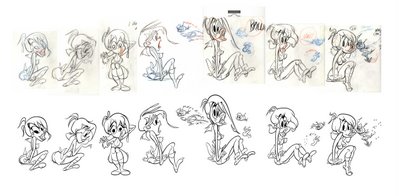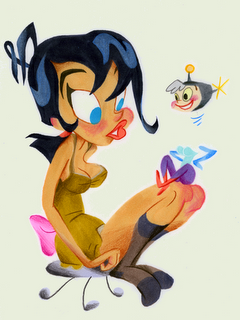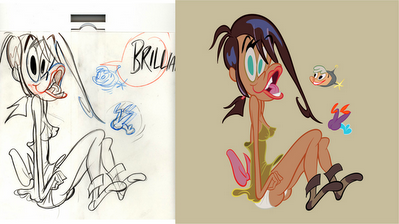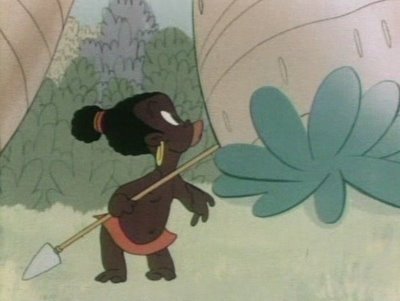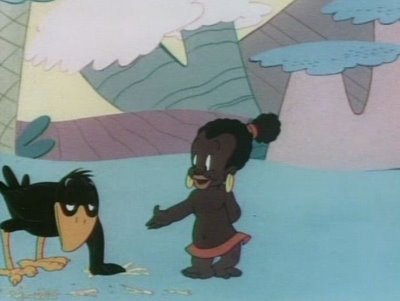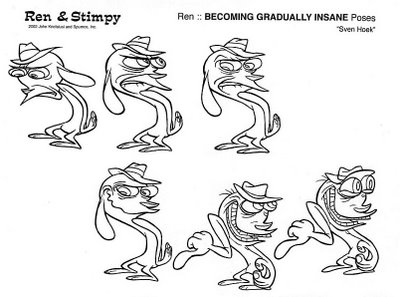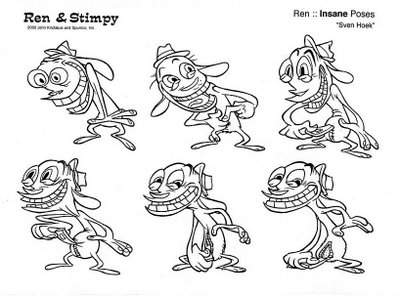
I think Milt Gross is the most naturally gifted cartoonist in history.
On the surface, if you are just looking at his work for the first time, you might be shocked. It's so loose and cartoony and doesn't use strict construction. Not all the details wrap perfectly strictly around the forms. (They DO wrap around the shapes and compositions.)
BUT Milt had absolutely great natural control over a ton of principles and skills, he had a natural observant eye for the way things really looked, a gift for caricaturing them and a beautiful ornate style that had humor as its first element.
His graphic style is hard to peghole. It doesn't fit into any school of cartooning. It's neither 2 dimensional nor 3 dimensional. It has elements of both at the same time, but perfectly controlled. I guess it's 4 dimensional. He bends space to allow you to see what he thinks is important in the scenes.
He also had a very rare gift that few cartoonists have-the gift of life. His every panel and character seem alive and bustling and full of inner motivation. I don't even know if that can be taught. Some artists never get it, no matter how many principles they learn.
This panel below has:
Great page layout design - every panel is a different and organic shape, yet all the panels are composed to look good together.
 Every Pose is different and fun.
Every Pose is different and fun.Every Pose has a clear silhouette and line of action.
A funny observant take on dog anatomy- Milt takes the stiffness of a dog's limbs and bends them into human actions and situations. This is not like Bugs Bunny or Tom and Jerry, who are merely built of pears and tubes. Their poses are comfortable in human attitudes. Pooch here is struggling with his own canine anatomy, but is not at all deterred despite the awkwardness- genius!
 Original Cartoony designs inspired by but not hampered by reality
Original Cartoony designs inspired by but not hampered by realityLook at these hilarious designs of ferocious animal heads! They aren't stock Disney animals or stock anybody's animals. Milt needed to make a story point and did it as extreme and precise as his wild creativity let him.
Great backgrounds

These BGs are not only shown from very difficult angles-they are also very specific.
The characters are in a Craftsman house.
Gross must have done tons of drawings of real things. He must have looked at all different kinds of houses, trees, landscapes, cities, furniture etc.
He was interested in how everything looked and he thought everything looked funny so that's how he drew it.
He didn't draw the "stock cartoon house" or the stock Nelvana tree with the Sheridan college bark that looks the same as the texture on every object in the Sheridan college universe.
I think Milt does the best cartoon backgrounds ever.
Crazy Ideas and Funny execution of them
 Compare these pages to the great Harvey Eisenberg pages in the post below. While Harvey's are technically great, they aren't particularly funny and the story is just stock comic book cartoon story fare.
Compare these pages to the great Harvey Eisenberg pages in the post below. While Harvey's are technically great, they aren't particularly funny and the story is just stock comic book cartoon story fare.The idea of a mutt wanting to be glamorous, so he cuts up a fox fur and glues it to himself in patches is funny by itself, but the drawings show the hilarious incongruity of how matted up and nasty the dog looks, yet he is prouder than a peacock.
Genius Page Layout
Great Compositions
 Varied and contrasted character designs
Varied and contrasted character designsLook how each character is made up of different shapes. The lady has a diamond shaped head with a pointy nose.
The man has a large forehead and a skinny protruding jaw. The little character has an upside down triangle head and an upturned bulbous nose.
The man is organic and the woman is more angular.
Many animated cartoons recycle the same basic shapes for their designs and just change the ears to denote what animal you're looking at.
In a Jack Kirby comic, almost every man has the same square head design.
It's very rare for a cartoonist to have a lot of different custom designed characters.
Milt Gross seemed to never run out of them.
Wild Action
 Milt's comics seem more animated than most animation-especially today's.
Milt's comics seem more animated than most animation-especially today's.Control of details-look how in the middle panel, the lady with the out of control vacuum cleaner and the horse all fly in an overall arc...the seemingly chaotic situation is carefully controlled to make it funny and easy to read and beautiful.
Funny Poses- no stock poses for Milt. Look at the pose in the second panel of the man with bent knee supporting the stretched right side of his body.
 Scale.
Scale. Amazing design, composition and control of where to put details to make this mansion look huge and magnificent.
Amazing design, composition and control of where to put details to make this mansion look huge and magnificent.Note the trees in the foreground are different kinds of trees than the ones in the background.
Dynamic Angles!
 Comic Story Pacing
Comic Story PacingThe angles get progressively more extreme which helps build the pace of the action.
Opposing Poses
 The poses of the characters contrast and react to each other. They don't just stand there straight up and down. They are alive and thinking.
The poses of the characters contrast and react to each other. They don't just stand there straight up and down. They are alive and thinking.The best animal Designs
 This bulldog kills me. He isn't your stock Preston Blair bulldog that you see many variations of in old cartoons. This one is totally original. Actually, maybe it's a boxer, but look at what an asshole he is!
This bulldog kills me. He isn't your stock Preston Blair bulldog that you see many variations of in old cartoons. This one is totally original. Actually, maybe it's a boxer, but look at what an asshole he is!Extreme Cartooniness
 These pages are just pure brilliant cartooniness. Milt is obviously totally into his story and having a lot of fun drawing it and that fun translates to us.
These pages are just pure brilliant cartooniness. Milt is obviously totally into his story and having a lot of fun drawing it and that fun translates to us.Cartoons are supposed to be fun, aren't they?
UPA really missed the boat on this point. Graphically, the UPA (and Disney's "UPA Style cartoons) cartoons are similar to Gross'. They are both "designy", yet the UPA and Disney cartoons are missing the element of fun and exuberance for life that leaps off of Milt Gross' pages.
I always wonder what Clampett would have done had he stayed in cartoons through the graphic 50s. He loved Milt Gross and his cartoons were always very alive. I imagine they would have looked something like this only with that great animation you only see in Clampett cartoons.
Designy cartoons don't have to be flat or boring.
These pages are works of fine art and should be hanging in a museum somewhere.
A 15-page Pete the Pooch comic is reprinted in ART OUT OF TIME!
Discover more Milt Gross and lots of other great cartoon art at Shane's wonderful site!
http://cartoonretro.com/
NEXT! .....The Rise and Fall of Construction in Cartoons, an inspiring and sad story.

















